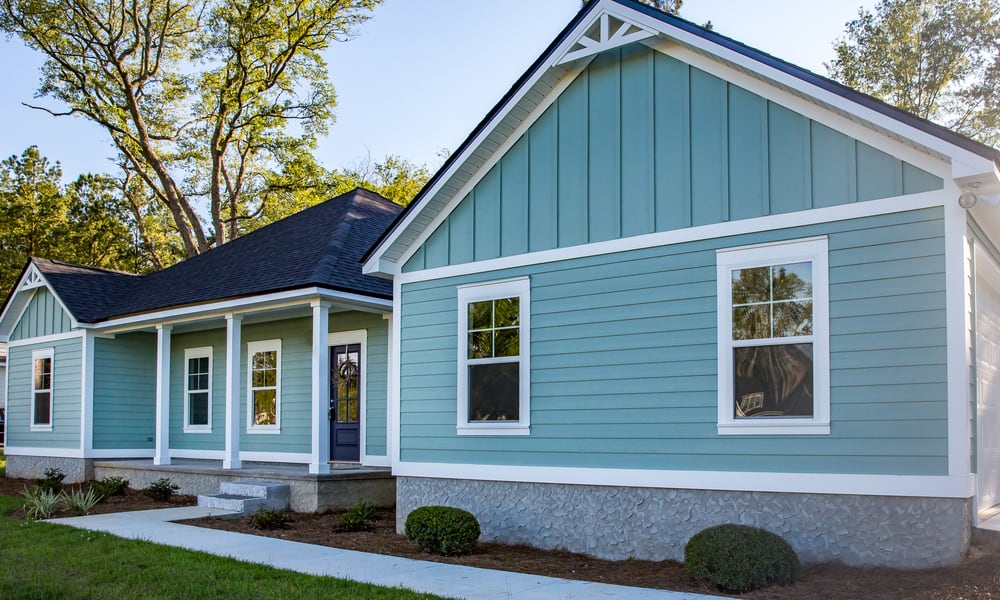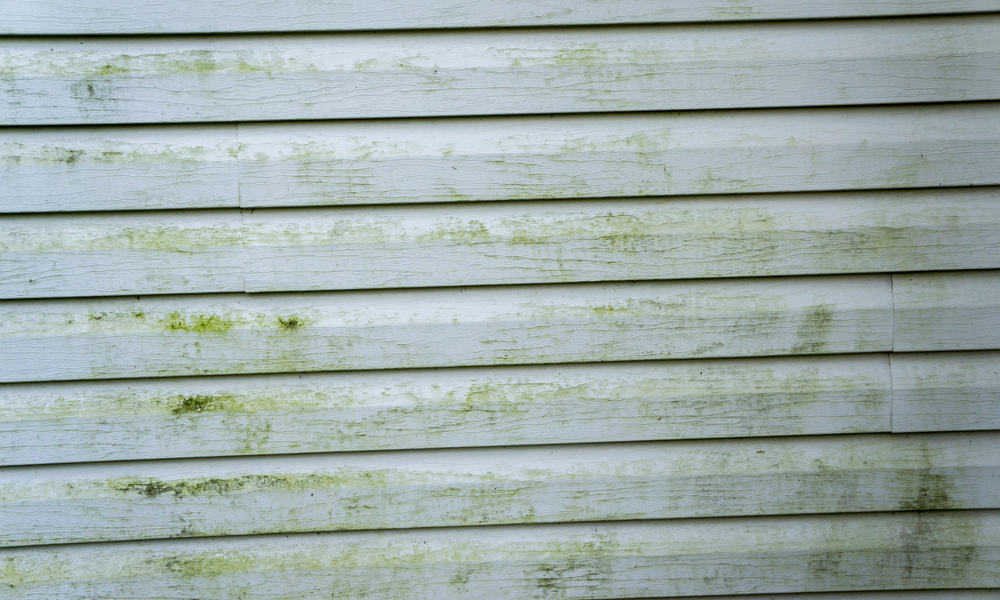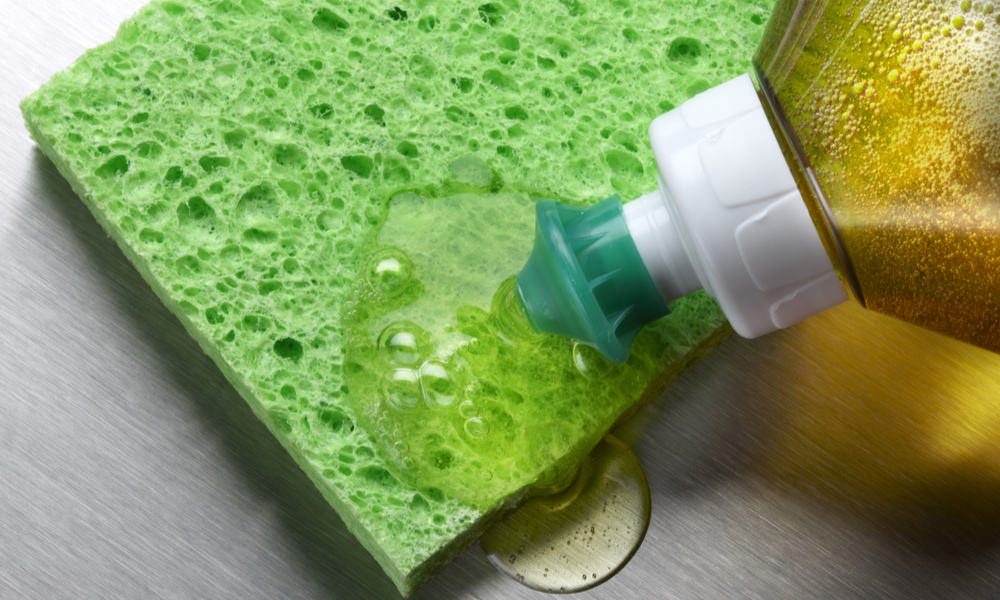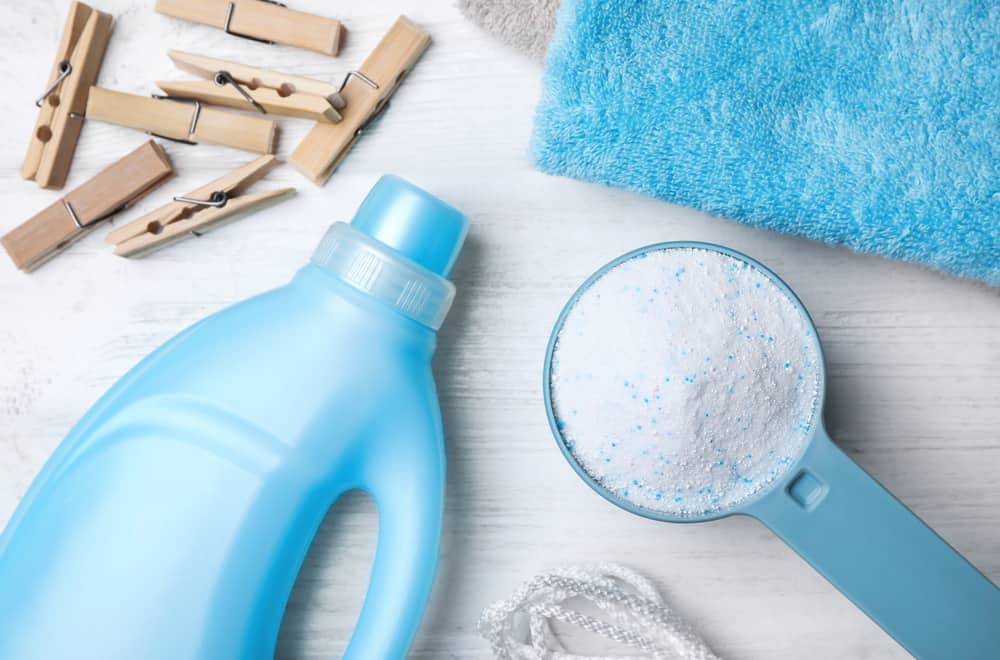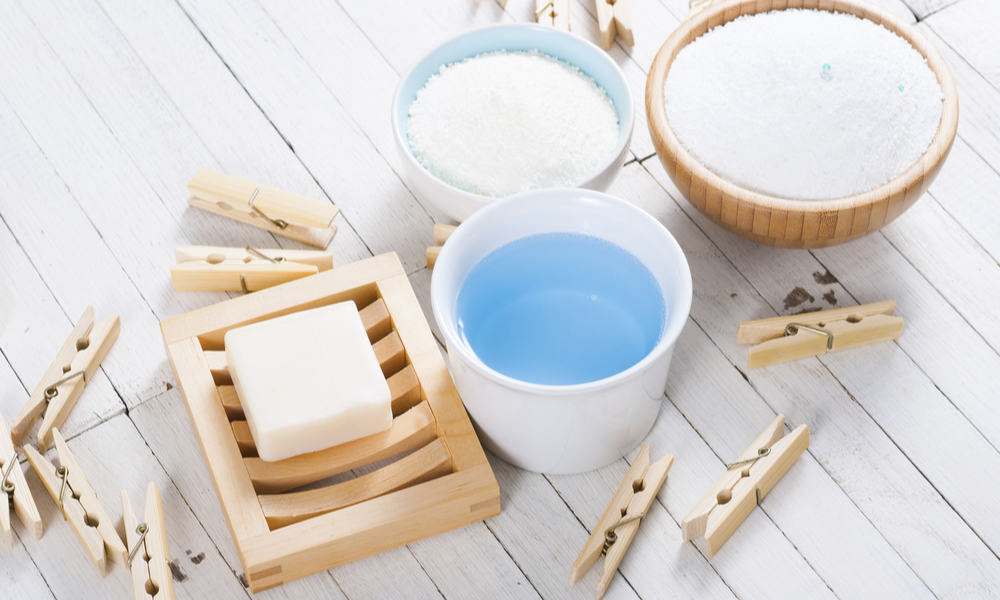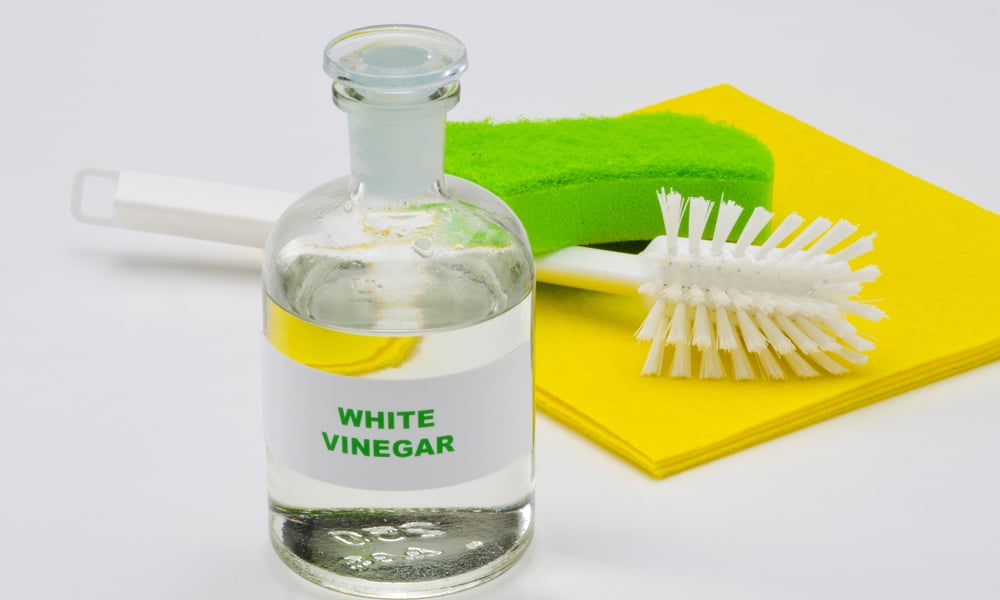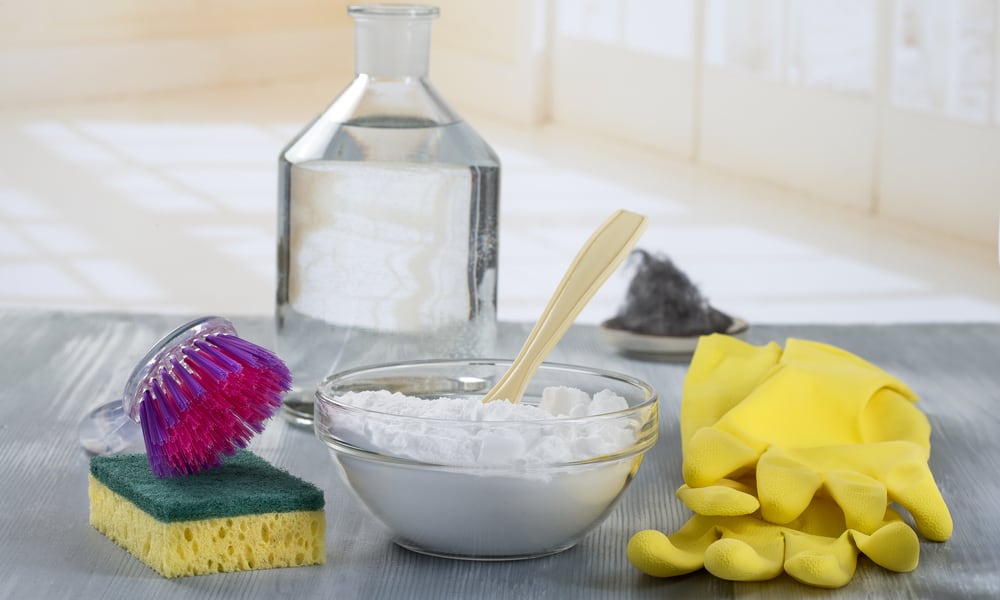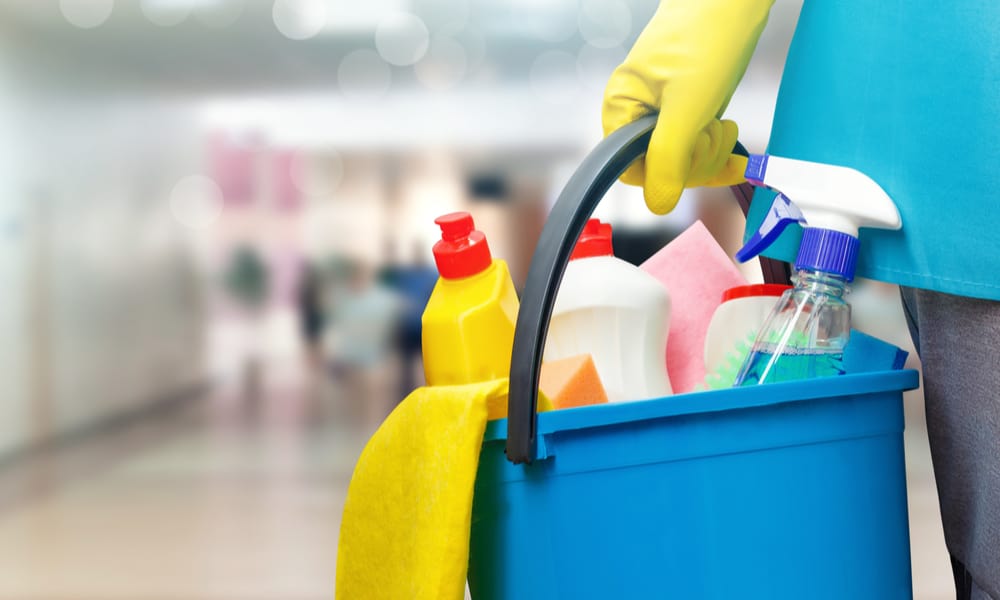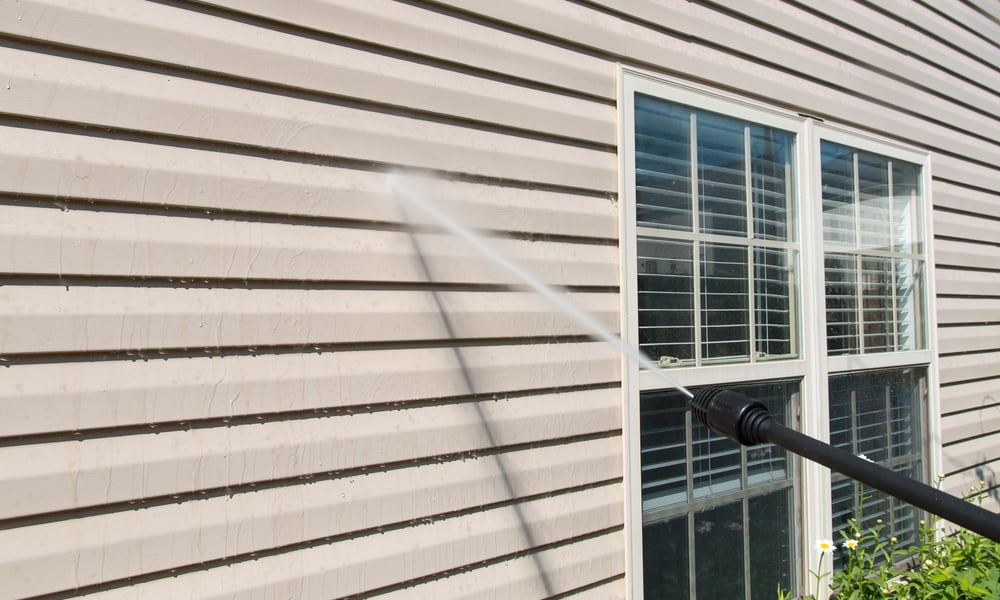Vinyl siding is a resilient, convenient, durable, and versatile material you can see on many American homes. In fact, it has been the most popular exterior cladding in the US for almost three decades. According to statistics, 33% of single-family homes with a facade made of this particular material were sold in 2011 and 26% in 2017.
The downside of this solution is the accumulation of dirt, stains of spider webs, insect and bird droppings, and pollen. Plus, you can see mold and algae developing if you live in a region with high humidity and discoloration due to fertilizers and herbicides concentration in the air. Therefore, the question of how to clean vinyl siding arises. Let’s see.
Table of Contents
Vinyl Siding Benefits
Vinyl siding is a popular siding choice these days thanks for numerous specific benefits, including:
Cost-effective material – On average, it costs less than other materials. For instance, you need to set aside $2 to $7 per 1 sq ft (0.09 m2) or approximately $2,500 to $8,750 for a 1,250 sq ft (116 m2) home.
Durable material – Vinyl siding can withstand extreme weather conditions, including high moisture, winds, heat, and cold. Therefore, most models you can find on the market come with lifetime or at least extended warranties.
Versatile material – It comes in numerous colors and textures, so you can customize it as you wish. Some models successfully mimic other materials, making this material highly valuable.
Easy to maintain material – Vinyl siding is an excellent solution for you if you don’t want to spend too much time and money cleaning your facade.
Reasons for Siding Discoloration
In most cases, vinyl siding discoloration is a result of weather conditions or dirt, but some reasons can be more severe, such as:
Everyday exposure – Many things from your surroundings will affect your facade discoloration. The most common reasons are sunlight, wind, heavy rains, leaves, insects, and birds.
Household stains – Even though most vinyl siding materials are resistant to household stains like grease or oil, you will spot them over time. Since they are ugly and attract annoying bugs, the best option is to get rid of them right away.
Algae – Believe it or not, this is probably the most common reason for vinyl staining in regions with high humidity. Depending on the algae variety, they will change your sliding color into russet, green, brown, or black. Luckily, they won’t cause any structural damage, but you can expect permanent changes over time.
Mold and mildew – These fungi will change the color of your vinyl siding for sure. Mold will form slimy or fuzzy red, dark green, or black patches over the facade. On the other hand, mildew causes white, yellow, or gray powdery or fluffy stains that become brown over time.
Pollen – You probably enjoy living in an area full of flowers, but the pollen can be a pretty tiring problem in that case. This yellow powder will paint your vinyl siding yellowish, making it looks stained and worn out. Additionally, pollen grains are food for mold, so you should rinse them away regularly.
Chalk accumulation – You will always notice this film over your pigmented vinyl siding exposed to sunlight.
Damaged vinyl siding – Finally, you can consider the possibility of replacing cracked or rotting vinyl siding after a while. In such a case, no washing can improve your facade appearance or protect your home from moisture.
Homemade Cleaning Solutions for Vinyl Siding Hand Washing
1. Dish soap
In most cases, you will need only dish soap and water to clean vinyl siding once a year.
You will need
- General-purpose cleaner
- Warm water
- Large sponge
Instructions
Apply the mixture with a soft-bristle cleaning brush and scrub the surface. Pay particular attention to tough stains and be persistent. Rinse the facade thoroughly while it is still wet.
2. Laundry detergent
Using this product is an excellent way to remove soot and grime, particularly if your house is located in an industrial area. If you add some bleach, you can use this solution to kill mold, as well.
You will need
- 75 ounces (81.5 ml) powdered laundry detergent
- 3 ounces (157 ml) powdered household cleaner
- 1 gallon (3.8 l) of water
Instructions
Make a mixture and apply it over vinyl siding. Scrub the surface thoroughly before rinsing.
3. Bleach and laundry detergent
This solution type is an excellent option for cleaning vinyl siding you can make in your home. It will whiten your discolored vinyl siding and destroy mold, but you should be careful since it gives off toxic fumes.
You will need
- 1 quart (0.95 l) liquid bleach
- 3 cups powdered laundry detergent
- 75 cups powdered household cleaner
- 1 gallon (3.8 l) of water
Instructions
Mix all ingredients, apply the solution over your vinyl siding, and let it sit for about ten minutes. Then, rinse it off with a garden hose or garden sprayer. In some cases, you will need to repeat the procedure to kill all accumulated mold.
4. White vinegar
Vinegar is a natural and non-toxic product that doesn’t give off toxic fumes but can kill only 80% of bacteria and mold from the surface.
You will need
- White vinegar
- Water
- Scrub brush
Instructions
Make a mixture of white vinegar and water in a 30:70 ratio. Apply the solution on the surface of the facade and scrub well before rinsing it.
5. Baking soda
You will need
- 5 cup of baking soda
- 25 cup of water
Instructions
Make a paste of baking soda and water until getting the gritty consistency. Keep in mind that you can’t use this for cleaning all facade surfaces. You can only apply baking soda over tough stains to remove them. The best option is to combine vinegar solution with this paste.
6. Ammonia
This product will quickly remove even tough stains from vinyl siding.
You will need
- Ammonia
- General-purpose cleaner
- Non-abrasive bathtub cleaner
- Scrub pad
- Sponge
Instructions
It is necessary to wear gloves and goggles to protect yourself when using ammonia. Never mix it with bleach to avoid a chemical reaction and releasing harmful chlorine gas. Take care to rinse the facade thoroughly after the cleaning process.
7. Commercial cleaners
It is necessary to check what kind of stains you need to deal with before starting cleaning since you can’t wash all of them with the same cleaner. However, never use those that negatively affect the siding surface like:
- Undiluted chlorine bleach
- Organic solvents
- Nail polish remover
- Liquid grease remover
- Furniture polish
Commercial cleaners |
|
| Cleaner type | Products |
| General vinyl siding cleaners | Simple Green, Armor All, Nice & Easy |
| Rust cleaners | Windex, Murphy Oil Soap, Fantastik |
| Paint cleaners | Soft Scrub |
| Bubble gum cleaners | Fantastik, Windex, Murphy Oil Soap |
| Pencil cleaners | Soft Scrub |
| Felt-tip pen cleaners | Fantastik |
| Tar cleaners | Soft Scrub |
| Crayon cleaners | Lestoil |
| Motor oil cleaners | Windex, Fantastik, Murphy Oil Soap, Lysol |
Vinyl Siding Pressure Washing
If you have a big house or prefer finishing vinyl siding washing in the quickest possible way, pressure washing is an excellent option for you.
If you don’t want to spend money on buying a pressure washer, you can rent one for approximately $40 to over $100 a day.
If you decide to purchase one, you can find an electric pressure washer for $100 to $400. A gas model is more expensive and costs about $300 to $600.
Be careful and check the vinyl siding manufacturer’s recommendations before starting cleaning since some of them won’t accept the warranty in case of damage during cleaning.
Once deciding to finish the job that way, you should follow the primary tips like:
- Pressure – Never use too much pressure to prevent vinyl siding warping and cracking. In most cases, it will be enough to use 1,300 and 1,600 PSI and increase it a bit when necessary.
- Angle – Keep the water stream at your eye level and never spray the surface at an angle. Otherwise, you can force water behind the siding and make conditions for mold development.
- Cleaner – Avoid harsh chemicals since natural products can finish the job successfully. So, you can use soapy water or a commercial detergent, depending on the soiling level and your preferences.
Hire a Professional
If you have no enough time to clean vinyl siding or your home is too big to finish the task on your own, you should consider hiring a professional to clean the facade for you. In that case, you will need to pay $300 to $500, and a true professional will finish the job within a day.
Instead of Summary
There are two ways to clean your vinyl siding. Both have some advantages and downsides, and you should decide which method is the best option for you.
Hand washing
Pros
- The chance of vinyl siding damaging is minimal
- It is not a complicated process
- It is an inexpensive option
Cons
- It is a tiring solution that requires time and effort
Pressure washing
Pros
- It is a quick method, and you can finish the job within an hour in most cases
- It will remove stains and mold even from hard-to-reach places
Cons
- It is an expensive solution since you need to rent or buy a pressure washer
- This way of cleaning may damage the facade when done incorrectly
